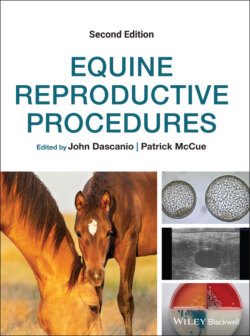Читать книгу Equine Reproductive Procedures - Группа авторов - Страница 69
Advanced Chromosome Analysis
ОглавлениеIn cases of aneuploidies (trisomies) or structural rearrangements (large deletions, translocations), fluorescence in situ hybridization (FISH) may be applied to confirm and refine the findings. The method uses fluorescently tagged DNA probes that are specific to individual horse chromosomes. These probes are hybridized to metaphase chromosome spreads and the results are observed under a fluorescence microscope. For example, FISH is particularly useful to identify small chromosomes involved in trisomies (Figure 22.5) or to determine the break and fusion points underlying structural rearrangements. However, the use of molecular cytogenetic methods is costly, laborious, and sets high demands on the microscopy and imaging systems, as well as on the skills of the personnel. Therefore, molecular methods are mainly used for research and less frequently for basic chromosome analysis service.
Figure 22.5 Fluorescence in situ hybridization (FISH) (a) with horse X chromosome probes (green and red; arrows) in an infertile mare with X‐trisomy (65,XXX) and (b) with horse chromosome 30 probes (red; arrows) in a developmentally abnormal colt carrying three copies of chromosome 30 (65,XY+30).
